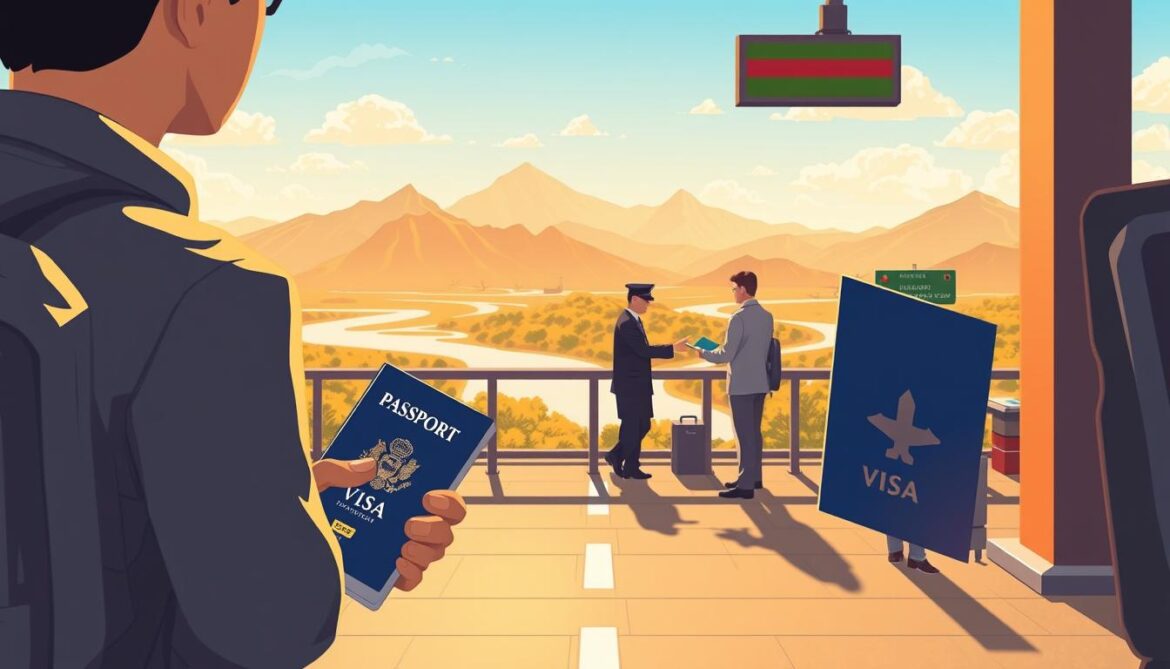Did you know over 12 million Canadians cross the U.S. border annually, many unaware of precise immigration rules? Navigating cross-border travel requires clarity, especially when planning extended visits or multiple trips. The Canada Visa Portal simplifies this process, offering real-time updates on regulations affecting your journeys south.
U.S. authorities generally permit Canadian visitors to spend up to six months within a 12-month period in the united states. This timeframe applies whether you’re making one extended trip or several shorter ones. Understanding these limits helps avoid complications during future travels.
Reliable information is your greatest asset when crossing borders. The Canada Visa Portal consolidates official guidelines from trusted sources like USCIS, ensuring you access accurate and current details. Whether you’re visiting family or exploring business opportunities, knowing the rules empowers confident travel planning.
Key Takeaways
- Most Canadian visitors receive up to six months in the united states per year
- Time allowances apply to single or combined multiple trips
- Official portals provide immigration updates from verified sources
- Cross-border rules impact both leisure and business travellers
- Documentation requirements vary by visit purpose and duration
Introduction: Navigating Your US Travel Experience
Every year, millions of Canadians plan trips south, but not all are prepared for the regulations governing cross-border movement. While Canada and the U.S. share the world’s longest undefended border, entry requirements remain strictly enforced. This makes reliable resources like the Canada Visa Portal indispensable for stress-free travel planning.
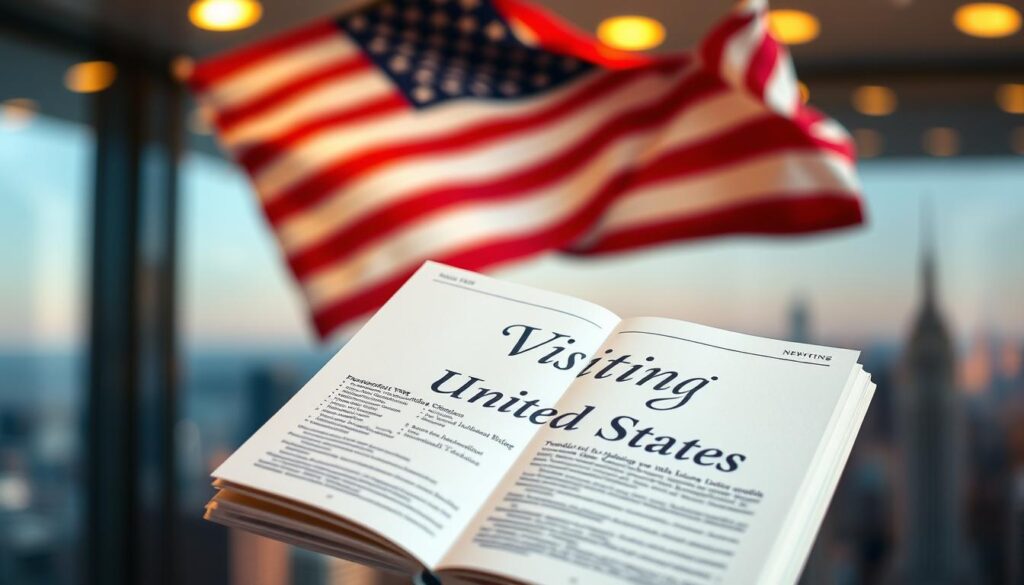
Why Preparation Matters
Border agents assess each visitor individually, with authority to deny entry if documentation appears insufficient. As stated by immigration officials: “Entry decisions rest solely with the receiving nation.” The Canadian government cannot override U.S. border policies, making prior research through official channels essential.
Types of Cross-Border Visits
Your travel purpose directly impacts required documentation. Common scenarios include:
- Weekend shopping trips
- Multi-month seasonal stays
- Business meetings or conferences
Short visits often require only a valid passport, while extended stays may need additional proof of ties to Canada. The Canada Visa Portal streamlines access to current forms, fee structures, and processing timelines specific to your situation.
Understanding the Canada Visa Portal
Planning cross-border trips requires more than just packing a suitcase – it demands reliable tools for navigating regulations. The Canada Visa Portal serves as your digital compass, offering verified travel guidance tailored to U.S.-bound journeys. This government-operated website consolidates critical details from multiple agencies into one accessible platform.
Key Features and Benefits for Travellers
The portal’s design prioritizes clarity and efficiency. Customizable search filters let you quickly locate information about specific destinations or trip types. Real-time alerts notify users about policy changes affecting entry requirements or health protocols in the United States.
Key sections include:
- Interactive maps showing regional risk levels
- Step-by-step guides for different travel purposes
- Direct links to U.S. immigration forms
Recent Updates and Important Notices
On July 9, 2025, the portal enhanced its assistance tools. The upgraded Need Help? section now offers live chat support during business hours. This improvement reflects ongoing efforts to simplify access to border-related information.
New features include:
- Redesigned notification system for urgent updates
- Expanded cultural guidelines for all 50 states
- Climate advisories for seasonal travellers
To stay informed, activate email alerts through your portal account. This ensures immediate updates about visa processing times or security changes in the United States.
Entry Requirements and Documentation for U.S. Entry
Crossing into the United States requires more than just a destination—it demands precise documentation. U.S. Customs and Border Protection officers verify credentials based on your travel method and age group. The Canada Visa Portal remains the most reliable source for updated entry protocols across all border points.
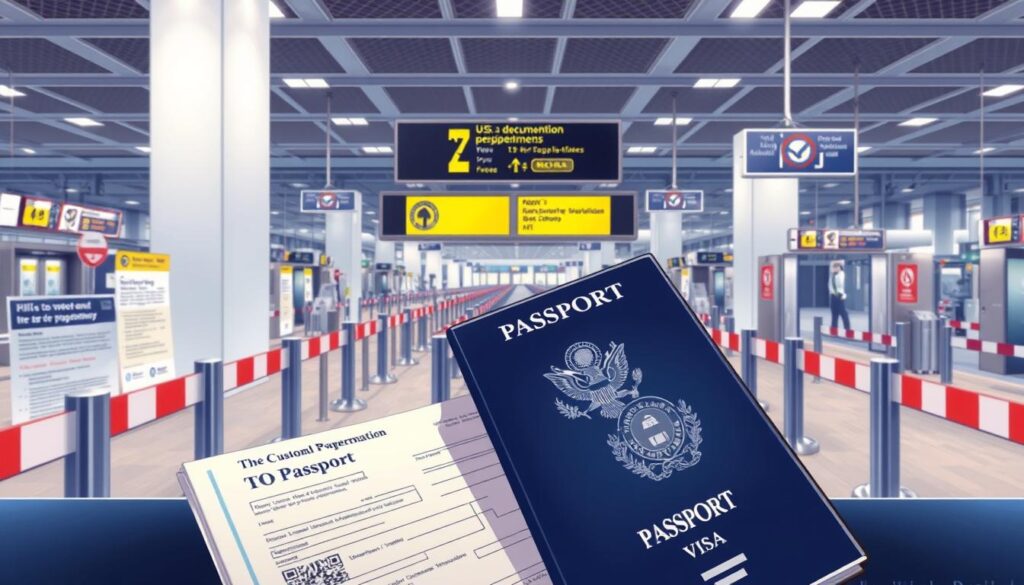
| Travel Method | 16+ Years | 15 & Under |
|---|---|---|
| Air | Passport/NEXUS card | Passport or citizenship certificate |
| Land/Water | EDL, EIC, or Trusted Traveler card | Birth certificate |
Essential Passport and Identification Details
Your passport must cover your entire U.S. stay. Enhanced options streamline crossings:
- NEXUS cards expedite airport security checks
- Enhanced Driver’s Licenses (EDLs) work at land borders
- Secure Certificate of Indian Status for Indigenous travellers
Additional Documents Accepted at the Border
Border agents may request supplementary proof of Canadian ties:
- Recent utility bills showing Canadian address
- Employment verification letters
- Return travel itineraries
As one border officer notes: “Complete documentation prevents 87% of entry delays.” Always cross-reference the Canada Visa Portal before departure—its interactive checklist tool adapts to your specific travel scenario.
How Long Can a Canadian Stay in the USA?
Cross-border visits demand awareness of time allowances to maintain hassle-free travel. Most visitors from Canada receive up to 182 days within any 12-month window when entering the united states. This applies whether you’re enjoying a single extended trip or combining shorter visits.
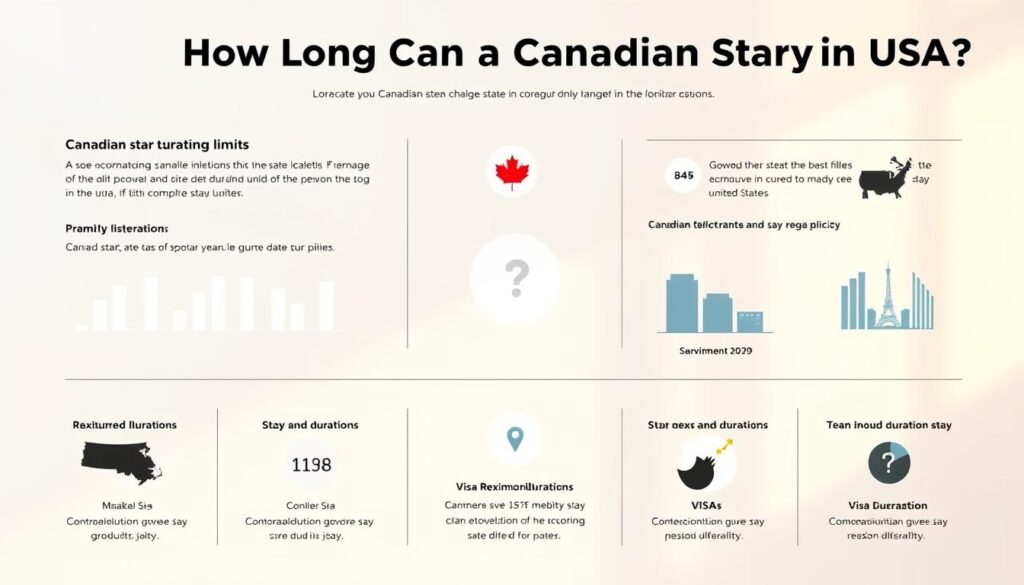
Border officials emphasize declaring your planned period during entry interviews. Your stated intentions help determine the authorized timeframe, which appears on admission stamps or digital records. Frequent travellers should track cumulative days across multiple trips to avoid exceeding annual limits.
The Canada Visa Portal simplifies tracking with interactive tools that calculate remaining eligible time. Recent updates include mobile alerts when approaching 75% of your allowed months in the united states. One border agent notes: “Accurate declarations prevent 92% of compliance issues.”
Key considerations for planning:
- Business activities may require different documentation than leisure stays
- Extensions beyond six months need advance approval
- Multiple short visits could trigger additional scrutiny
Always verify current regulations through the portal before packing. Its colour-coded calendar feature visually maps your travel history against permitted days, ensuring confident border crossings throughout the year.
Visa-Free Travel vs. Visa Requirements for Extended Visits
Many assume border privileges between Canada and the U.S. mean unlimited access, but regulations have clear boundaries. While most trips south qualify for visa-free entry, exceptions exist for specific travel purposes and durations. The Canada Visa Portal clarifies these distinctions through interactive decision trees and official policy updates.
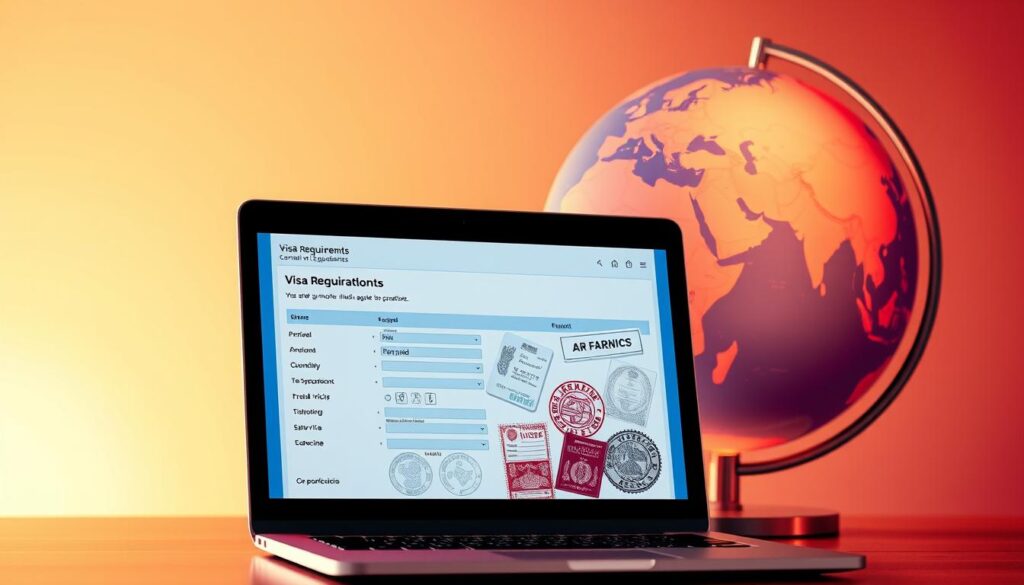
When Documentation Needs Change
Canadian citizens typically enjoy visa-free entry for tourism, family visits, or business meetings lasting under six months. This privilege simplifies short-term plans but requires careful planning for extended stays. U.S. Customs and Border Protection notes: “Visa exemptions apply only to temporary visits for pleasure or routine business.”
| Visit Type | Documentation | Max Duration |
|---|---|---|
| Tourism | Passport | 6 months |
| Business Negotiations | Letter of Invitation | 6 months |
| Academic Research | J-1 Visa | Program Length |
| Employment | Work Visa | Contract Term |
Special circumstances demand formal visa applications. These include:
- Paid performances or athletic competitions
- Degree-seeking education programs
- Journalistic assignments exceeding 30 days
The Canada Visa Portal flags unusual scenarios through its travel purpose analyzer. Frequent travellers should monitor cumulative time across multiple trips – border officers track entries through automated systems. Those exceeding six months within a year risk entry denials without proper authorization.
Exceptions apply for cross-border workers under formal agreements. Always verify current requirements using the portal’s visa wizard tool before finalizing travel plans. This prevents surprises at border checkpoints and ensures smooth transitions between countries.
Navigating U.S. Immigration Procedures and I-94 Registration
Every border crossing leaves a digital footprint tracked by U.S. authorities. The I-94 admission record serves as your official proof of legal entry, whether you’re visiting for business or leisure. This system helps Customs and Border Protection monitor authorized stay periods while ensuring compliance with immigration rules.

What You Need to Know About the I-94 Form Process
Most air travellers receive automatic electronic I-94s upon entry to the United States. Land border crossings sometimes require manual registration – a detail many visitors overlook. One CBP officer clarifies: “Your admission record determines compliance, not just your passport stamp.”
Verify your I-94 status instantly through the U.S. Customs and Border Protection website. The Canada Visa Portal offers step-by-step guides for retrieving this critical information. Key differences exist between travel methods:
- Air/sea entries: Automatic electronic records
- Land crossings: Possible manual verification needed
- NEXUS card holders: Streamlined processing
Business travellers and frequent visitors should check their I-94 after each entry. This document confirms your permitted stay duration and visitor classification. Those requiring visa extensions or application adjustments must present valid I-94 details to immigration officials.
The Canada Visa Portal’s new alert system notifies users about upcoming I-94 expirations. This feature helps maintain legal status while avoiding accidental overstays. Always cross-reference your travel dates with official records through the CBP’s online portal.
Registration, Fingerprinting, and Legal Exemptions for Canadians
Crossing the border brings questions about registration rules. While most travellers breeze through checkpoints, some situations require extra steps. The Canada Visa Portal clarifies these requirements with tailored guidance for different visitor profiles.
Understanding Exemptions and Requirements
Canadian citizens enjoy several exemptions under U.S. Customs and Border Protection policies. Students, temporary workers, and permanent residents often bypass fingerprinting if previously registered. USCIS states: “Visitors 14+ lacking prior registration must complete biometric checks during entry.”
Key exemptions include:
- Diplomatic passport holders
- Children under 14 travelling with family
- Those with approved Trusted Traveler cards
The portal’s registration assistant tool simplifies this process. Input your citizenship status and travel history to receive customized checklists. Recent updates added mobile-friendly forms for border-crossing applications.
Always verify your entry record through U.S. Customs and Border Protection systems after arrival. This ensures compliance and prevents future travel disruptions. With proper preparation through official resources, your cross-border experience remains smooth and predictable.


